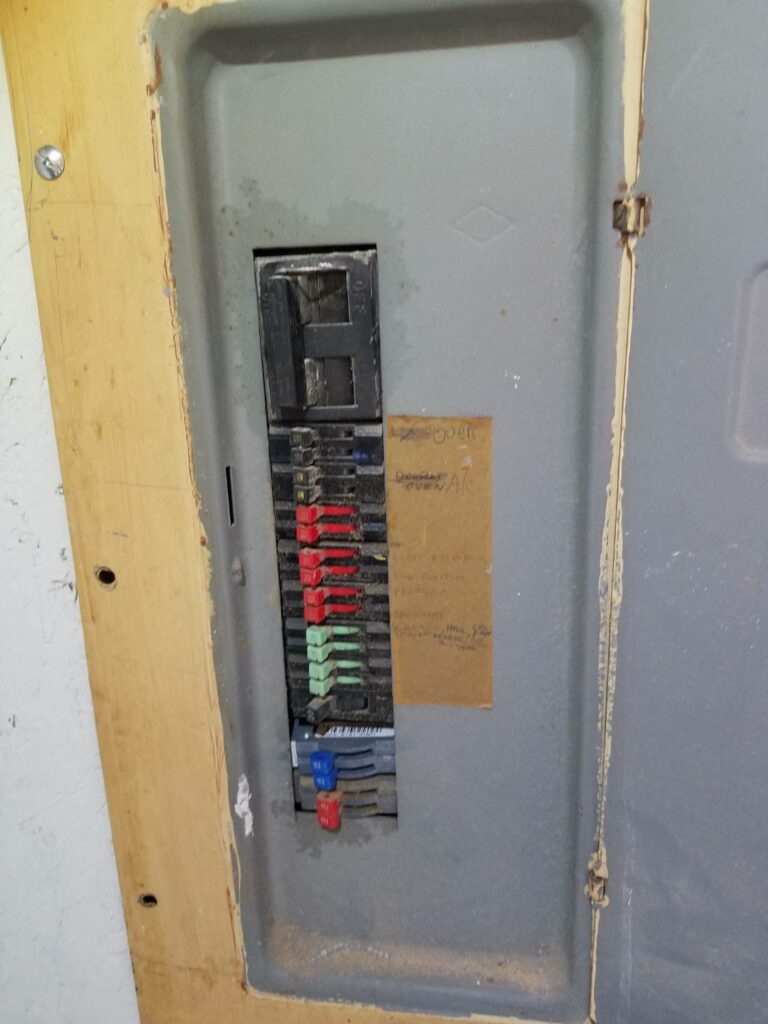When we start thinking about buying a new home, whether previously owned or a newly built, most of us don’t think about electrical issues. Hidden beneath the walls of your new home could be major problems. If you don’t have a detailed home inspection the results could be deadly! Home builders may not realize it, but new receptacles don’t always work correctly.
GFCI (Ground Fault Circuit Interrupters) receptacles are supposed to be installed in kitchens, bathrooms, utility rooms, garages, and exterior locations. You may see a small light with a reset button on these receptacles, or they may be installed at the panel box. These receptacles are designed to keep us from being electrocuted when they sense a difference between the hot and neutral wires. GFCI protection is required by the National Electrical Code within 6 feet of sinks, lavatories, tubs & showers. These protective receptacles are designed to cut off electrical current within 1/40th of a second.
As inspectors, we’ve occasionally found faulty GFCI receptacles in new homes that delayed cutting electrical current to as much as 5 seconds. We frequently find receptacles in previously owned homes that are labeled GFCI and do not work at all. These are dangerous! Someone could be electrocuted in such conditions. This is also why the Texas Real Estate Commission Standards of Practice call for all GFCI to be inspected, unless appliances are already plugged into the receptacles.
Many builders do not follow the 6 feet rule for GFCI receptacles. The rule was rewritten recently to help people understand this is a 6 feet by string rule. In other words, the receptacle may be in a hallway within 6 feet of a bathroom lavatory (outside the bathroom). The rule was written this way to protect someone who might have a light burned out and brings in a lamp or other appliance into the bathroom. Lamp cords are usually 6 feet in length. If not GFCI protected and the lamp falls into the lavatory, someone could be electrocuted. We once had a builder argue this point over a receptacle on the living room side directly below the kitchen sink by 3 feet in distance. I asked him if it was worth putting someone at risk over a $20 receptacle. A lamp or other 110 volt appliance could have easily fallen into a sink full of dishes being washed from the bar counter.
It really is that important! There is no price we can place on a human life. If you don’t use Inspections of Texas to inspect your home, ask your inspector to make certain they test every GFCI receptacle.
Tamper Resistant receptacles have been required since 2017 in the National Electrical Code. These are particularly important for protecting children. The tamper resistant receptacle will not allow an object to be inserted on one side of the outlet. Both sides of a plug must be inserted for it to allow electricity. This protects children from inserting a knife, or fork, or another metal object into the slot and being electrocuted. Older homes don’t usually have this kind of protection and it is rare for us to find a new home without all tamper resistant plugs. Plastic covers can be inserted or receptacles replaced to protect children.
AFCI (Arc Fault Circuit Interrupter) receptacle requirements have changed over the years. Depending upon when a house was built, these important protections for fire in the walls may not have been required. The Arc Fault Circuit Interrupter shuts off the electricity in 1/10th of a second to prevent the arc becoming a spark. The premise of AFCI was to protect a sleeping person who had plugged in an item to a wall outlet. The requirement for AFCI was originally for bedrooms and smoke alarms. Now it includes almost every receptacle in the house with the exception of bathrooms, garages, and exterior. In most instances, the wiring of the home is not the problem. AFCI helps protect against fires due to old or junk appliances that are faulty, and items being used other than for what they were intended.
The current electrical codes have dramatically improved the safety of homeowners and their families. Receptacles and breakers do fail and need to be replaced over time. So it is important to update your electrical. Before buying a home, have an inspection done for your safety!

